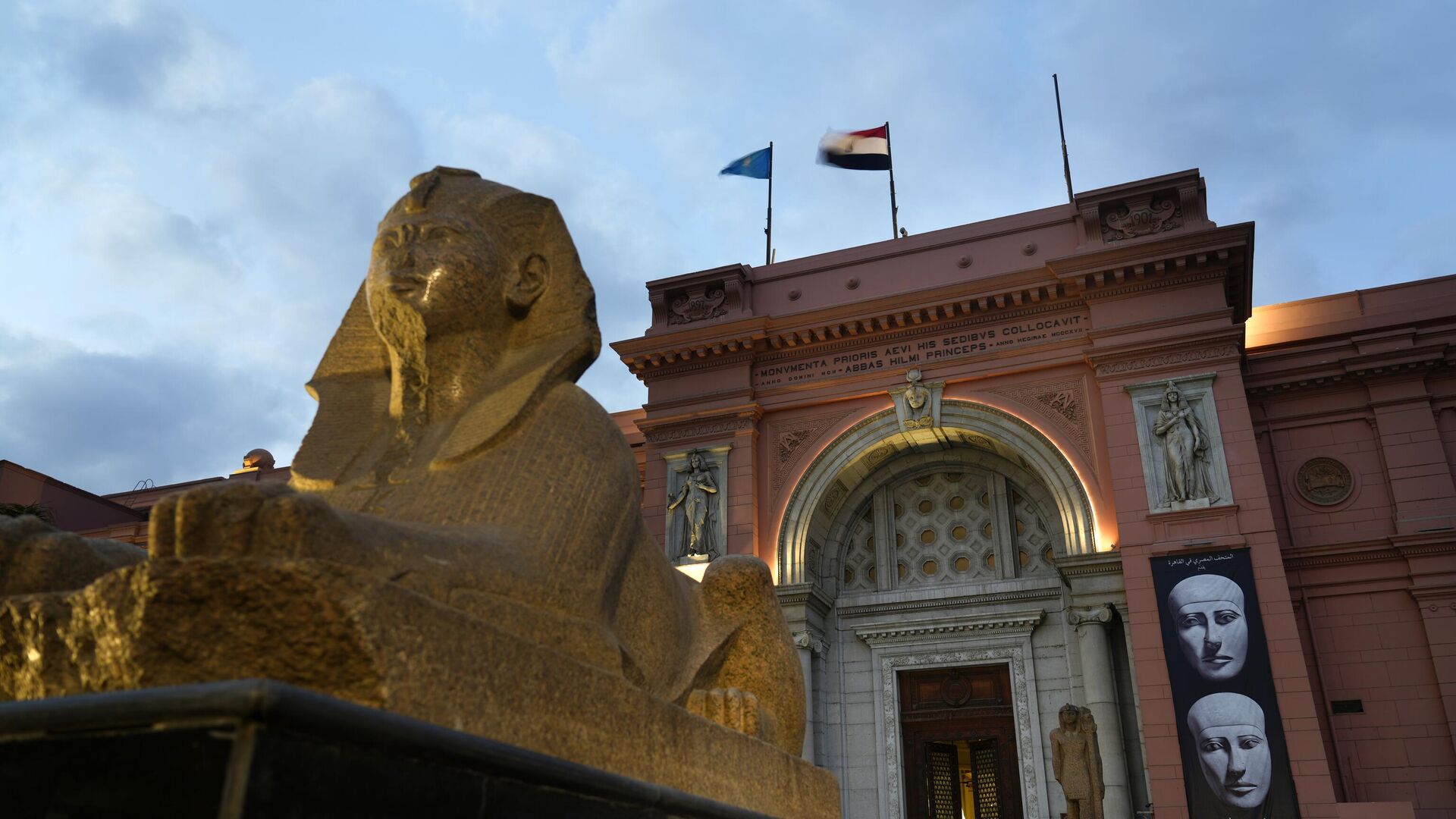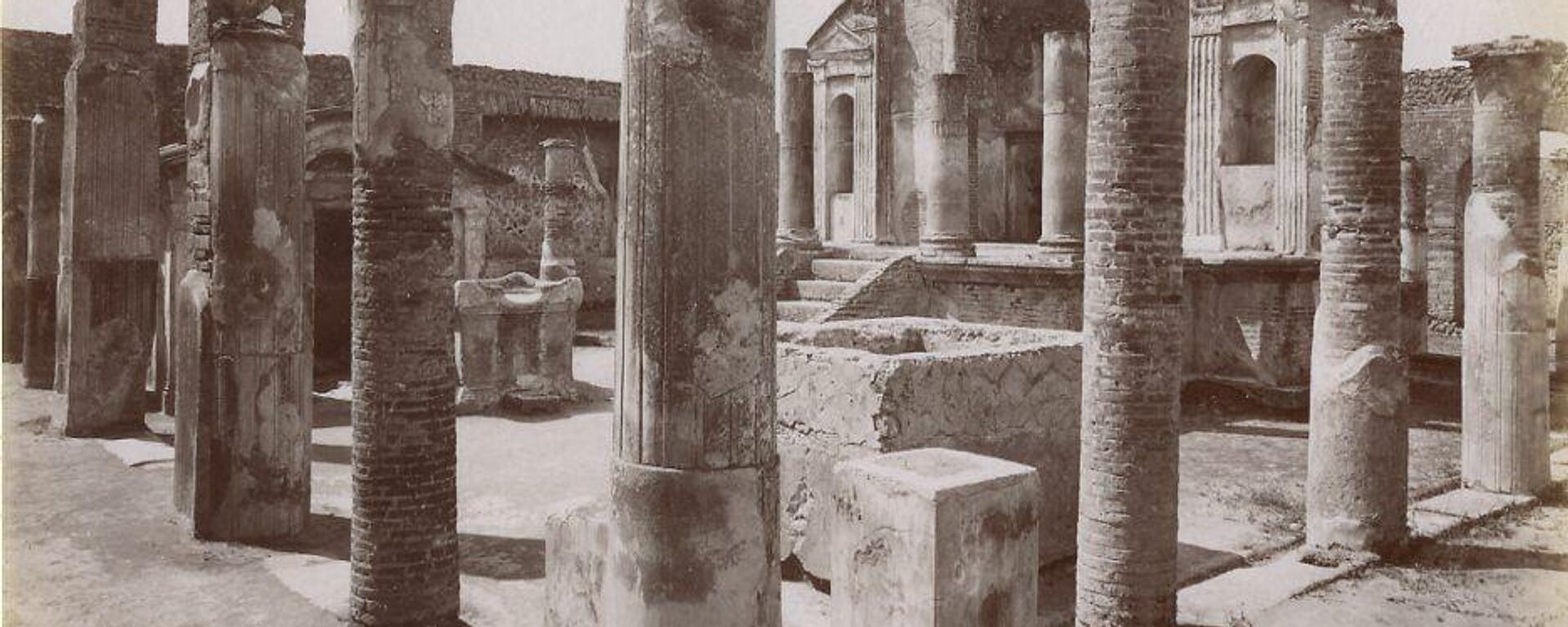https://en.sputniknews.africa/20230509/italy-returns-four-smuggled-ancient-artifacts-to-egypt-1059140137.html
Italy Returns Four Stolen Ancient Artifacts to Egypt
Italy Returns Four Stolen Ancient Artifacts to Egypt
Sputnik Africa
Four ancient artifacts smuggled to Italy have been returned to Egypt, the country's Ministry of Tourism and Antiquities said in a statement.
2023-05-09T16:56+0200
2023-05-09T16:56+0200
2023-07-16T18:53+0200
north africa
egypt
italy
artifact
ancient egypt
colonialism
culture
https://cdn1.img.sputniknews.africa/img/07e7/05/09/1059140610_0:160:3072:1888_1920x0_80_0_0_1e741b1887ad94eb87da681aa14b18a0.jpg
Four ancient artifacts smuggled to Italy have been repatriated to Egypt, Cairo's Ministry of Tourism and Antiquities said in a statement.The ministry received the artifacts at the headquarters of Ministry of Foreign Affairs. Italian authorities gave these antiquities to the Egyptian Embassy in Rome after their illegal status was confirmed.It was noted that the four artifacts date back to different eras of Egypt’s history. Among them are a small pottery vessel; two small pieces of clay that together represent the upper part of a female figure; a part of a coffin lid carved in wood and decorated with rows of hieroglyphic texts; and a piece known as a "column of Djed", one of the symbols of the ancient Egyptian religion. The repatriated artifacts will be then handed over to the Egyptian Museum in the heart of Tahrir Square, Cairo, in preparation for the necessary restoration.The secretary-general of the Supreme Council of Antiquities of Egypt, Mostafa Waziri, expressed his full appreciation for the fruitful cooperation between the ministries, as well as with Italian authorities in recovering these artifacts and completing the process of their return to Egypt. He noted that this kind of cooperation confirms the commitment of all concerned parties to preserve the cultural heritage "of all peoples of the world."Recently, Egypt have been making active efforts to return ancient artifacts to the country. In 2022, the ex-Minister of Tourism and famous archaeologist Zahi Hawass launched a petition demanding that the British Museum and the Louvre return the Rosetta Stone and the Dendera Zodiac, respectively. Tens of thousands of items from the era of Ancient Egypt were looted from Egypt during colonial times. According to the Ministry of Tourism, more than 29,000 cultural artifacts have been returned to Egypt since 2015. Among the most valuable of them, which the Egyptian authorities insist on returning, are the Nefertiti Bust, currently displayed at the Neues Museum in Berlin, and the famous Rosetta stone, exhibited in the British Museum.
https://en.sputniknews.africa/20230501/offerings-to-egyptian-goddess-isis-discovered-in-italys-pompeii-1058966560.html
north africa
egypt
italy
ancient egypt
Sputnik Africa
feedback@sputniknews.com
+74956456601
MIA „Rossiya Segodnya“
2023
News
en_EN
Sputnik Africa
feedback@sputniknews.com
+74956456601
MIA „Rossiya Segodnya“
Sputnik Africa
feedback@sputniknews.com
+74956456601
MIA „Rossiya Segodnya“
north africa, egypt, ministry of tourism and antiquities, artifacts, ancient egypt, italy
north africa, egypt, ministry of tourism and antiquities, artifacts, ancient egypt, italy
Italy Returns Four Stolen Ancient Artifacts to Egypt
16:56 09.05.2023 (Updated: 18:53 16.07.2023) Cairo has made major strides in its crusade to bring back illegally seized and exported ancient artifacts to the country of late. According to official data, since 2015, the North African nation managed to recover and return thousands of historical items.
Four ancient artifacts smuggled to Italy have been repatriated to Egypt, Cairo's Ministry of Tourism and Antiquities said in a statement.
The ministry received the artifacts at the headquarters of Ministry of Foreign Affairs. Italian authorities gave these antiquities to the Egyptian Embassy in Rome after their illegal status was confirmed.
It was noted that the four artifacts date back to different eras of Egypt’s history. Among them are a small pottery vessel; two small pieces of clay that together represent the upper part of a female figure; a part of a coffin lid carved in wood and decorated with rows of hieroglyphic texts; and a piece known as a "column of Djed", one of the symbols of the ancient Egyptian religion.
The repatriated artifacts will be then handed over to the Egyptian Museum in the heart of Tahrir Square, Cairo, in preparation for the necessary restoration.
The secretary-general of the Supreme Council of Antiquities of Egypt, Mostafa Waziri, expressed his full appreciation for the fruitful cooperation between the ministries, as well as with Italian authorities in recovering these artifacts and completing the process of their return to Egypt. He noted that this kind of cooperation confirms the commitment of all concerned parties to preserve the cultural
heritage "of all peoples of the world."
The country's Ministry of Foreign Affairs, for its part, said that in collaboration with the Ministry of Tourism, the move "gives more attention to the file of recovering Egyptian antiquities within the framework of the national plan to restore the historical, archaeological and artistic heritage smuggled outside the country."
Recently, Egypt have been making active efforts to return ancient artifacts to the country. In 2022, the ex-Minister of Tourism and famous archaeologist Zahi Hawass launched a petition demanding that the British Museum and the Louvre return the Rosetta Stone and the Dendera Zodiac, respectively.
Tens of thousands of items from the era of
Ancient Egypt were looted from Egypt during colonial times. According to the Ministry of Tourism, more than 29,000 cultural artifacts have been returned to Egypt since 2015. Among the most valuable of them, which the Egyptian authorities insist on returning, are the Nefertiti Bust, currently displayed at the Neues Museum in Berlin, and the famous Rosetta stone, exhibited in the British Museum.


